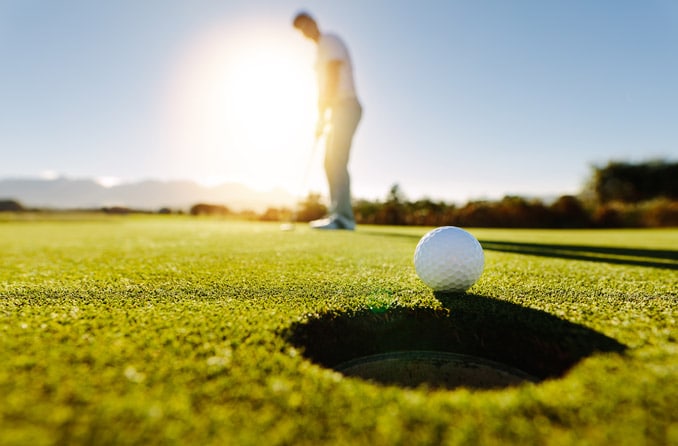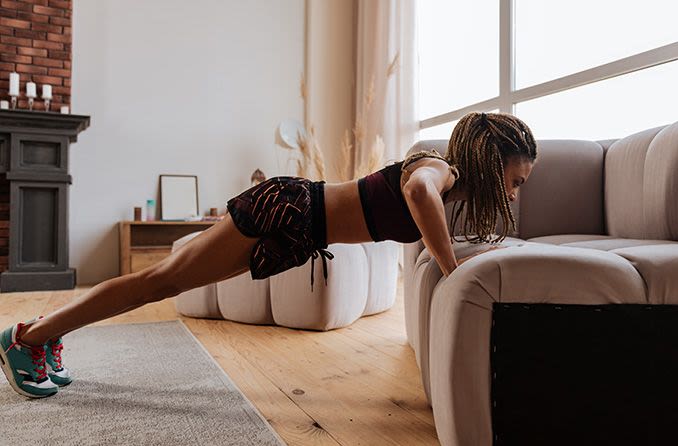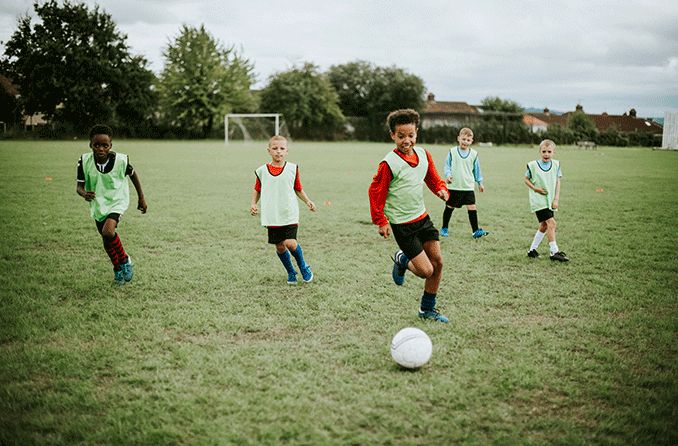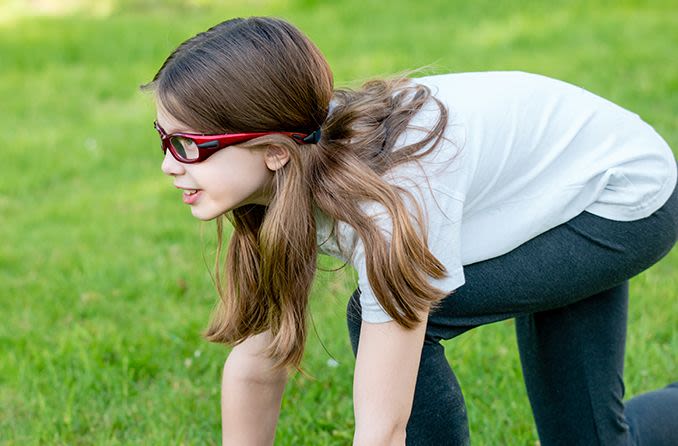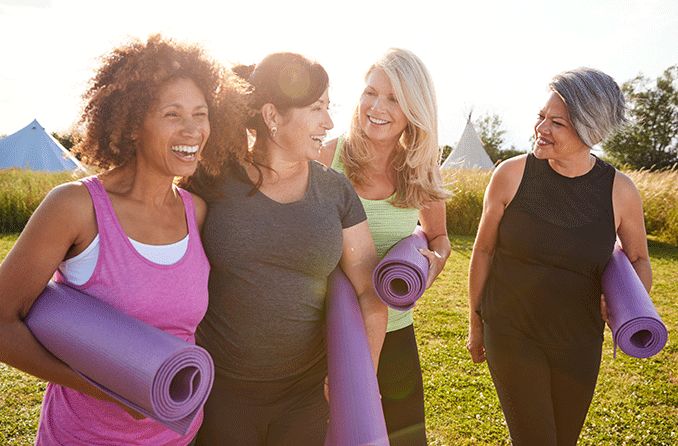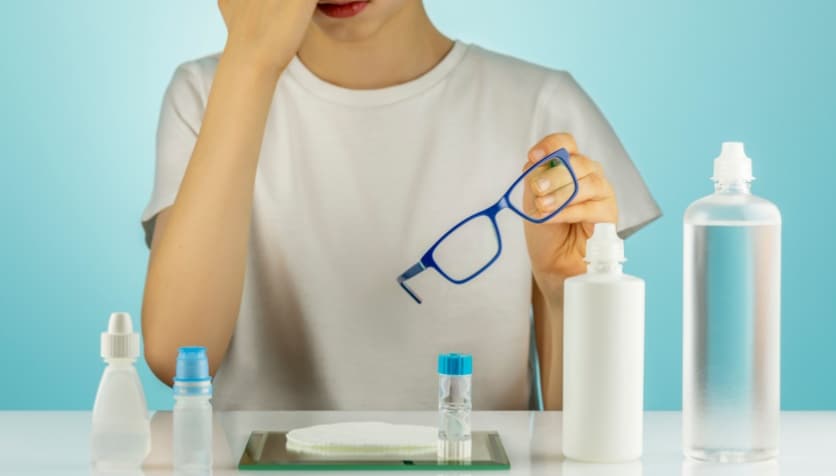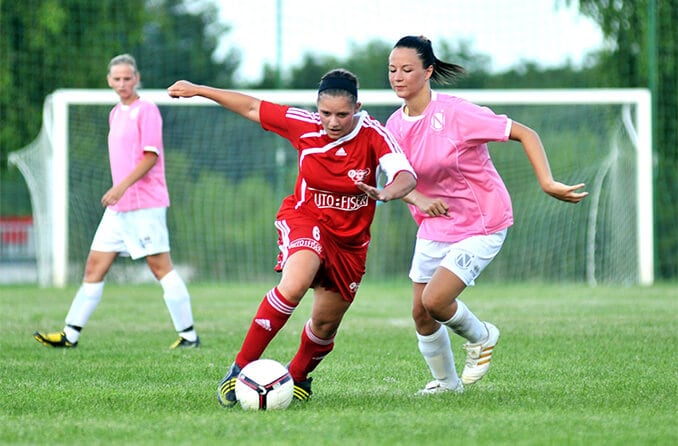Methods of improving sports vision skills for optimum athletic performance will vary, depending on your sport.
For example, golfers need good hand-eye coordination, timing and depth perception to determine how and where a ball should be hit.
Visual memory is a crucial sports vision skill for team players who must make split-second decisions about their next move based on where they see people and objects situated on a field or court.
On the other hand, keen visual memory is not as important for bowlers, who operate in a comparatively static environment.
Eye-foot coordination is important for soccer and tennis players, while peripheral vision is crucial for basketball. Contrast sensitivity is a key vision skill for skiers, who must see every shadow in the snow before them so they know when to turn.
Eye dominance, focus flexibility and other sports vision skills
Here are a few more basic sports vision skills, some that you can practice at home:
Focus Flexibility. This is the ability to change focus from a faraway object to a near one, or vice versa. If you are over age 40, you may have noticed that you are losing this ability (accommodation) and need reading glasses, multifocal eyeglasses or bifocal contact lenses to compensate.
You can't really improve your focus flexibility as successfully through vision training or eye exercises when loss of this skill is caused by presbyopia. However, everyone can practice focus flexibility by concentrating on switching focus between distant and near objects.
Quick Tip: Try frequently changing focus between your computer screen and a picture hanging on the wall across the room, or a scene outside the window. This not only helps your focus flexibility, but it also can relieve eye strain caused by extended time on the computer.
Peripheral Awareness. This ability involves perceiving what's going on at either side of you without turning your head. Eye doctors test for peripheral vision loss by having you look straight ahead while lights flash at various angles off to the side.
Quick Tip: To improve this aspect of your vision for better sports performance, try looking at a busy scene with your head turned to one side (perhaps on TV or a computer screen, or on a sidewalk). Remember to practice from the left and from the right.
Dynamic Visual Acuity. Dynamic visual acuity enables you to see objects clearly when they are moving quickly. You may have 20/20 vision when sitting still and reading an eye chart. But when motion is involved, your visual acuity could be worse. In sports vision testing, you might be asked to view objects or words that move fast across a computer screen and then identify them before they disappear.
Quick Tip: For those who still have old-fashioned record players in the home, the American Optometric Association recommends a homemade way to improve dynamic visual acuity: Cut letters of different sizes out of a magazine, put them on the turntable and — at arm's length — identify them as they revolve. Use different speeds (33, 45 and 78 revolutions per minute, or rpm), and then progress to smaller letters if the test becomes too easy.
Depth Perception. This visual ability enables you to make spatial judgments, including how far away an object or person is from you. One test for this skill involves identifying objects or shapes that are in random, dot-patterned backgrounds.
Some of this ability depends strictly on physical characteristics. For example, spacing between the center of your two pupils (pupillary distance) is thought to play a major role in how well you see in three dimensions.
Quick Tip: Ever try to put the cap on a pen and miss? Practicing this skill at arm's length is one way to improve your depth perception. Another method is to hold a very small pebble or BB at arm's length and drop it into a drinking straw.
Color Vision. Your ability to detect different colors and shades is important in ball sports such as football.
In fact, having a color deficiency can pose extra problems for some athletes. The most common color deficiency is an inability to distinguish red from green, which means a reddish-brown American football on a green field could be tough to see.
Color deficiency tests include cards with random dot patterns printed in a particular color, along with an object shown in a different color. If you can't view the object, you can't distinguish between the two colors.
Some tinted lenses enhance particular colors, such as yellow, by filtering other colors. Even if you're not color deficient, enhancing the color of a ball (such as a yellow tennis ball) could help you see it better, so you have more time to react to it. Performance-enhancing sports eyewear and contact lenses can be designed with different tints for specific sports.
Quick Tip: Of course, you can't really practice seeing in different colors if you are color deficient. But you may be able to find special glasses or contacts for color blindness from a limited number of eye doctors in the United States. These specially tinted lenses enhance differences between certain colors to help people with a color vision deficiency better distinguish an object from its background.
Hand and Eye Dominance. Understanding which eye dominates may help an athlete adopt better strategies for improving athletic performance.
Most athletes know they are either right-handed or left-handed, and they adjust body movements accordingly. But they may not realize that their dominant eye may process visual information more fully and accurately than their non-dominant eye.
As an example, knowing which eye dominates can help an athlete achieve better head and eye positioning to interpret fast action in sports such as basketball or baseball.
Some athletes are cross-dominant, meaning that a right-handed person is left-eye dominant or a left-handed person is right-eye dominant. This can be an advantage in some sports, but potentially a serious disadvantage in sports such as archery and target shooting where one side of the body is used to both aim and shoot.
Quick Tip: In target shooting, a dominant hand and dominant eye tend to work together much more efficiently when they are on the same side of the body. So if you have trouble hitting the target, cross dominance might be the reason. You may need to make adjustments such as switching the hand you usually use to hold your firearm to make sure you are able to view the target with your dominant eye.*
Sports vision training for serious athletes
For better sports performance, consider visiting a sports vision specialist for training and testing. Also, an eye doctor who specializes in sports vision can give you valuable advice about special eyewear such as sports safety goggles and performance-enhancing lens tints.
A specialist also can devise a formal program of sports vision training to address your specific needs.
Find your dominant eye
Sophisticated tests can conclusively determine which eye is dominant. But if you want to try your own quick test, use both hands to form a small triangle between the thumbs and first knuckles of your forefingers.
With both eyes open and your arms outstretched, move your "triangle" until you have a distant object such as a light switch within the center. Shut your left eye. If the object stays centered, you are right-eye dominant. If the object moves out-of-center, you are left-eye dominant.
Eye dominance can be a factor in certain sports such as target shooting, for which you need to determine what kind of weapon to buy. This is because you want to match up which hand you use for shooting with your dominant eye.
It's also a factor in photography, if you're using a camera with a viewfinder. You'd want to frame the scene using your dominant eye, not your non-dominant eye.
Being left-handed or right-handed does not predict which eye will be dominant. These traits are controlled by different parts of the brain. — M.H.
*2008 sports vision presentation by Stephen A. Beckerman, OD, and Steven A. Hitzeman, OD, at SECO annual conference in Atlanta.

